Tesla Speaks ~ Part II
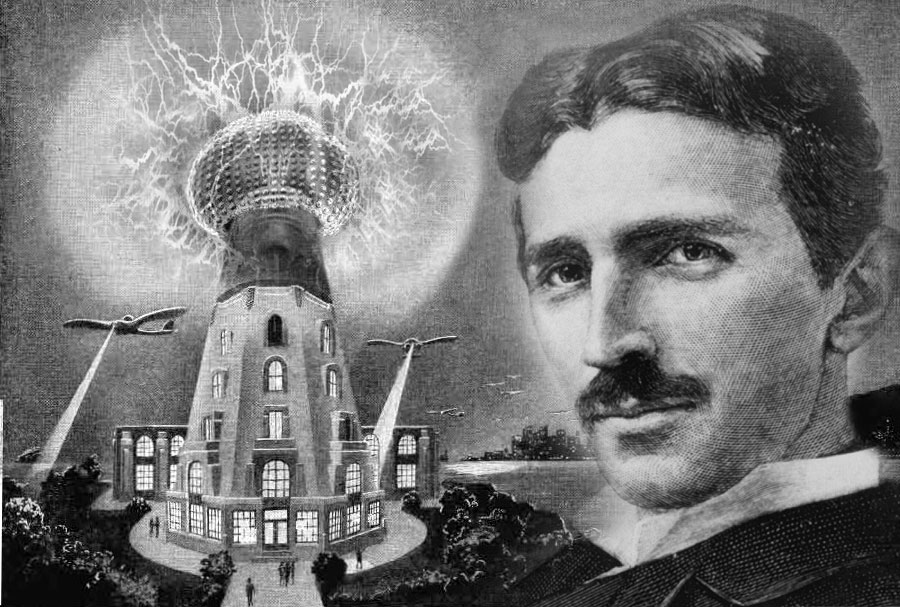 by Dr. Robert R. Leichtman
by Dr. Robert R. Leichtman
Introduction:
Nikola Tesla spent his lifetime making the impossible possible–and doing it with brilliance, style, and seeming ease. He made practical the generation of alternating current, which electrical scientists had thought impossible. He developed a system for the long distance transmission of electricity, which Thomas Edison had thought impossible. He broadcast electricity through the air without wires, which many “experts” still think is impossible. And although he died in 1943, his work is currently attracting more attention than ever, as scientists try to duplicate his work in resonance, magnetism, and death rays.
The following is a short excerpt from a conversation with the spirit of Nikola Tesla, through the mediumship of the author, Dr. Robert R. Leichtman.
Q: Since today is a full moon, would you have anything to say about the relationship between the phases of the moon and the concentration of energy? Is this an area scientists ought to be investigating more fully?
Tesla: Of course they should, although it might prove to be a lethal strain for some scientists I’ve met. [Laughter] Yes, investigating the phenomena associated with the full moon would be very worthwhile, because it would lead scientists to study and, I would hope, comprehend the subtle planes of matter. I will have to use occult terminology, but I am talking about the etheric subplanes of the physical dimension and the phenomena and substance of the astral plane.
When it’s a full moon, it’s high tide not only on the oceans but also on the subtle planes. The subtle body of the planet is affected—etherically, astrally, and even mentally. It is high tide, which simply means that matter is stirred up. The electrical and magnetic forces are stirred up. In fact, anything that has to do with matter, whether it is dense physical matter or the subtle matter of the inner planes, is intensified.
Of course, I am not suggesting that the speed of light is faster at high tide, but there are some measurements which could be made, using current technology, which would demonstrate that there are some slight but amazing variations in electromagnetic phenomena. And I’m not referring to increases in static—although, if people would look at what sometimes is thought of as electromagnetic static or interference, they might be surprised by what’s going on.
Yes, electromagnetic phenomena are enhanced at the time of the full moon. That is why the emotions are intensified then. As you know, emotions carry a kind of magnetic charge. It is common knowledge that the emotions are more stirred up at high tide, the full moon. In point of fact, there are a variety of electrical and magnetic reactions which are intensified at that time. This phenomenon could most readily be isolated and studied in plant life. It involves subtle electrical changes concerned with chemical and especially biochemical reactions. These reactions are extremely sensitive to subtle changes in electrical fields, and the most sensitive instrument for detecting these changes would therefore be living matter, whether it is animal, human, or plant, and is always multidimensional. Any living organism has not only a physical body but also an etheric and astral body. In the higher animals and humans, there is also at least a slight trace of mental body, although I sometimes wonder about some people. [Laughter] All of these bodies or dimensions interact, producing manifestations such as growth, health or disease, or movement. These manifestations are all affected by any change in the electromagnetic field. And so they are definitely affected by the high tide, the full moon.
Q: An interested scientist, then, could actually measure a reflection of the growth factor in plants by experimenting with the electrical sensitivity in those plants and how it is affected by the tides.
Tesla: Sure. And a good place to start such an investigation would be with the alleged “folk tales” about planting such and such a type of plant during the dark of the moon—that is, the new moon—and planting others at different phases. There are also rules for when to prune, and so on. That folklore, I’m told, is based on centuries and centuries of commonsense observations by simple but intelligent people who patiently noticed what happened when they did this and what didn’t happen when they did that. They noted what went wrong and what went right. I would call them the original scientists. They actually observed reality. They drew logical, sensible, rational, and empirical conclusions from those observations, tested them by using them, and then passed on this knowledge to succeeding generations. Obviously, such a body of knowledge is easily contaminated by prejudice and superstition, but there are still a lot of good ideas preserved in that fashion.
Now, the value of this folklore to a scientist is not that it will help him learn when to plant his garden or when to pull weeds, but that it provides an opportunity to investigate the relationship between the physical plane and nonphysical dimensions. The physical plane is surrounded by and constantly influenced by subtle, invisible dimensions of energy and substance. And the basic connecting link from one dimension to another, from one grade of substance to another, is the electromagnetic forces in life. There is a profound need for new understanding of the essential physics of the universe, the essential nature of the universe, and the essential electromagnetic nature of life itself and all life forms.
Q: Many scientists hearing you talk about folklore would say, “Oh, but that’s not logical, that’s not scientific.” What is the true scientific attitude?
Tesla: I am tempted to make a remark that the minds of some scientists really belong in ants, but somehow they got mixed up in the wrong species. But I won’t say that. [Laughter]
Let me take some liberties in answering your specific question. The major thing I’d like to do in this interview is set down my philosophy of science and scientific investigation. I think the example of scientific investigation I set during my physical life was probably more important than any specific inventions of developments I was responsible for. That’s what I would like to inspire people to understand in this conversation.
I had the capacity to grasp the broad fundamental essence of electricity and other phenomena and convert these theories and fundamental principles into concrete, practical devices and machines. This is a way of using the mind that is distressingly deficient in the modern scientific scene. There are too many scientists who are experts in facts but do not understand what they are doing with them! They are specialized to the point of absurdity and have lost sight of the roots of the study they are pursuing. These scientists are well grounded in concrete intellectual theory, but in many cases this is just a crude intellectual construct which does not bear a very close relationship with reality. They fail to think about these things—why, they don’t even speculate about them!
If there is a relationship between folklore and a certain scientific theory, how can it be illogical to explore that relationship? I say it is illogical not to explore it!
It is alright to accept these intellectual constructs for lack of something better, but scientists should not accept them as though they were inviolable. They should not accept them in such a way that they limit the scope of scientific investigation and cloud the scientist’s capacity to observe life!
There are a number of new breakthroughs in science which are urgently needed at this time. We on the inner planes are ready to proceed, but these breakthroughs won’t be able to come until we have a different sort of consciousness on the scientific scene, able to behold the broadest possible range of a subject.
I suppose I am describing the ideal of a more humanistic scientist—an investigator, scientist, or engineer who understands that what he is working on is also significantly related to civilization and humanity. Such people do exist today; they have always existed. But this element is sadly missing in most scientists today. The wholeness and humanism of science is not being taught or emphasized. Some people may give it lip service, but they don’t really live it. This is very sad, because the real stimulus for scientific discovery is the collective needs of humanity. Whenever a scientist effectively focuses this collective need through his work, great things can be called forth, depending, of course, on the current state of knowledge and technology. The more a scientist can grasp the needs of society and humanity, the more he will find the energy, stimulus, and impulse to make great breakthroughs in chemistry, biophysics, or what have you. This is a very important point—and one that is all too often thrust aside as “philosophical ravings.” Yet I am talking about harnessing the energy that is required to stimulate new discoveries. The energy!
This is the approach I used in my life, so I know it works. And if the scientist can behold the applications of his intent, based on the needs of humanity, then he will understand how he must proceed to get his breakthrough. A scientist discovering new theories, new ideas, new techniques, or new technology must be thought of as being a midwife—no, that is the wrong term.
Q: A mother?
Tesla: I was looking for another term besides mother but I’ll accept that. The scientist is the mother for new thought children. The human consciousness on the physical plane is designed to serve this role. The inspiration for new ideas comes from beyond the physical level of consciousness; the mind receives this inspiration and nurtures its physical unfoldment. It is the womb of new discoveries.
Q: Where does the scientist start? With theories or with phenomena?
Tesla: With the observable phenomena, of course. That’s the trigger device that would stimulate the scientist’s curiosity. But an investigation should be based on something more than observed phenomena alone. I don’t want to say it should be based on a theory, because it’s not a theory. Scientific investigations should always be based on an understanding of the fundamental essence of things. A theory is a human construct; what I am saying is that the humanistic scientist will always base his investigations on an awareness of the patterns of life. Unless the scientist connects himself which the essence of life before he proceeds, he will never achieve any really significant breakthroughs. He won’t be connected with the energy of discovery. The “scientist” who starts with theories then tries to prove them is dealing only with a hash of ideas. He’s trying to take the results of this and the effects of that and the byproducts of something else and put them all together and create something meaningful. It’s a good way to cook up leftovers, but it doesn’t lead to scientific breakthroughs. [Laughter]
Q: The scientist, then, should have at least an understanding of observable phenomena to start from.
Tesla: Yes, inspiration alone is not enough. The scientist must prepare himself by diligently studying all the known science of his day and age, filling his mind with facts and practical experience and mathematics. You cannot be a good mother unless you have acquired all the parts needed to generate and deliver the new thought child.
Q: I’m not a scientist myself, as you know, but I have observed any number of “scientists” who start with a pet theory and pretty much avoid the actual phenomena. That’s always seemed like backwards science to me.
Tesla: That’s why I didn’t want to use the word “theory” a few moments ago. A theory is an intellectual construct, based on the scientist’s interpretation—sometimes his feeling—of what the observable facts and phenomena mean. The good scientist starts not with theories but with an awareness of the essence of life, and works from there. In dealing with physics, electricity, and similar phenomena, for instance, the scientist would want to start with an understanding of the essence of the physical plane. In the nineteenth century, this essence was called “the ethers.” It wasn’t too well understood then and is even less well understood today, much to our disgust. But it’s in the ethers, or the etheric plane, to use the occult terminology, where I found the roots of all the phenomena and potentials that I found so fascinating and worked with in my lifetime. It is the operation of electrical and physical phenomena at these etheric levels which must be studied, not somebody’s theories, if the scientist hopes to accomplish anything significant here on the earth plane.
That’s not to say you ignore theories. The good scientist reads about the theories of the day, of course, and can be inspired by them. It’s a little like reading a novel and being inspired by some of the ideas in it. The novel does not necessarily contain the ideas as such, but reading it does trigger insights of your own. Other peoples’ theories are useful in that same way.
The tragedy is that scientists get stuck with a pet theory and their minds stop and they can’t behold anything new, anything beyond the theory. I think that sort of one-channel “thinking” has been called “vertical thinking” by someone. If someone is working on transmitting electricity, for example, and gets stuck on the idea that it must be transmitted with 60-cycle current and X number of volts, that can be a great limitation. He will only be able to think within the framework of short distances. With lateral thinking, however, he would realize that he could use high frequency currents or extremely high voltages and make the long distance transmission of electricity quite possible.
One-channel thinking could almost be called “constipated thinking.” It’s a great hindrance to science. The people who work with a pet theory in this way are just digging the hole deeper—without realizing that there is nothing worthwhile to find in the direction they’re digging. They need to look in new areas.
Never confuse the role of technician with the role scientist. Technicians like to measure things and record data and accumulate a hoard of statistics that they then try to interpret. Careful measurement of data certainly has its usefulness, but a scientist is an individual who is motivated by a spirit of inquiry to discover the way a certain body of phenomena behaves, how it can be manipulated and modified, and how it can be harnessed for some practical application. He learns to manipulate the phenomena so he can duplicate or recreate them. You see, there needs to be at least a semi-practical end point to this scientific inquiry. I know that idea will upset a lot of people, but it is vital to keep in in mind. Too many people seem to think that being a scientist means collecting and observing facts. I say there must always be a practical end in mind, and that practical end is best defined by the scientist’s constant reappraisal. He should ask himself: what does this phenomenon mean? How can I use it? What good would it do for me or anyone else to understand why this happens or how this works? By asking questions like these, the scientist helps ground the mental energies of this knowledge in the physical plane.
I want to digress a moment to talk about the nature of ideas. A lot of what people call “ideas” are just fudged-up emotional messes, but that kind of idea is not going to help anyone solve problems. True ideas are concepts. They are fifth-dimensional and in constant motion. That means that an idea cannot be observed or dealt with the same way you would observe or deal with a stone. To deal effectively with ideas, the scientist needs to observe a variety of interrelated phenomena and extract from those observations the repeated patterns, principles, parallels, applications, and so on. In the process of observing these phenomena in this very practical, sensible, and rational way, it is possible for the mind of the scientist to “reach up” and grab the very essence of the idea which is manifested through them. To grasp this essence, of course, he has to enter the plane of thoughts, the mental plane. To put this allegorically, he reaches out with two or three or ten “thought fingers” and grasps this fifth-dimensional idea, which seems to be whirling in space with about 120 corners.
Q: That’s not a literal number is it? [Laughing]
Tesla: Well, I made it up, but it’s not too far from accurate. Anyway, the scientist brings three or four of these “corners” of the idea into his consciousness. Now, to be able to do that requires a capacity for thinking abstractly and an ability to project, apply, and associate the essence of the thought to concrete knowledge and phenomena on the physical plane. That’s how a fifth-dimensional force—the real idea—gets delivered into the physical consciousness of any intelligent person, not just scientists. It’s a very important part of true logical thought, but to understand what I am saying, you have to realize that logic involves an inner-dimensional activity. Logic has more levels to it than most people understand. One can talk about linear logic, that one plus one equals two and two plus two equals four. This kind of logic is based on a progression, where you add brick to brick to brick and end up with a wall. But there’s another type of logic—another aspect of logic, really—where you learn to think in somewhat different terms. You observe your three bricks and understand they can be used to make a wall, but then your mind leaps to another level and you realize that this wall can be part of a fence, or part of an apartment house, or part of some other structure. Or they can be laid into a sidewalk. You are tuning into the essence of bricks—the purpose of bricks. This can be done, but only by someone who is able to leap up to a mental level where he can appreciate that bricks have greater bricks, have greater bricks, have greater bricks, just as fleas have lesser fleas, that have lesser fleas, that have lesser fleas, that have lesser fleas. [Laughter]
As you move into the more subtle dimensions of thought, you move from concrete, observable facts and phenomena to a more generic level of thinking, where you deal with the archetypal essence of the phenomena—the patterns of thought, the principles, and, I daresay, the generalities. You begin to deal with the principles of natural law. From there, you can actually tap into the very essence of concepts—what is truly the archetypal essence of ideas. At that point, you begin to synthesize the different levels of thought and can then project that synthesis into all kinds of experimental situations. It’s like being able to say to yourself, “If I understand the principles, patterns, and essence behind this particular phenomenon of electricity—or whatever—then I can apply those same principles, patterns, and essence in all these other ways, too. To do this and that and something else over here.” And, indeed, you can!
Excerpt from Nikola Tesla Returns
See Part I here.
Posted in Nikola Tesla, Other Topics, Science For The New Agewith 1 comment.


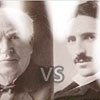
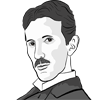
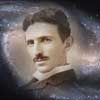
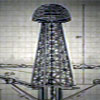
I Believe! After much thought and pondering about the focus being brought on your work Mr Tesla, I know that it is your lead that will be followed where the rest of my earthly years are concerned.
It will be my greatest honor to learn from your solid factual foundation, and I will try to keep up!
Thank you so very kindly for the chance to provide meaning and substance in our lives!